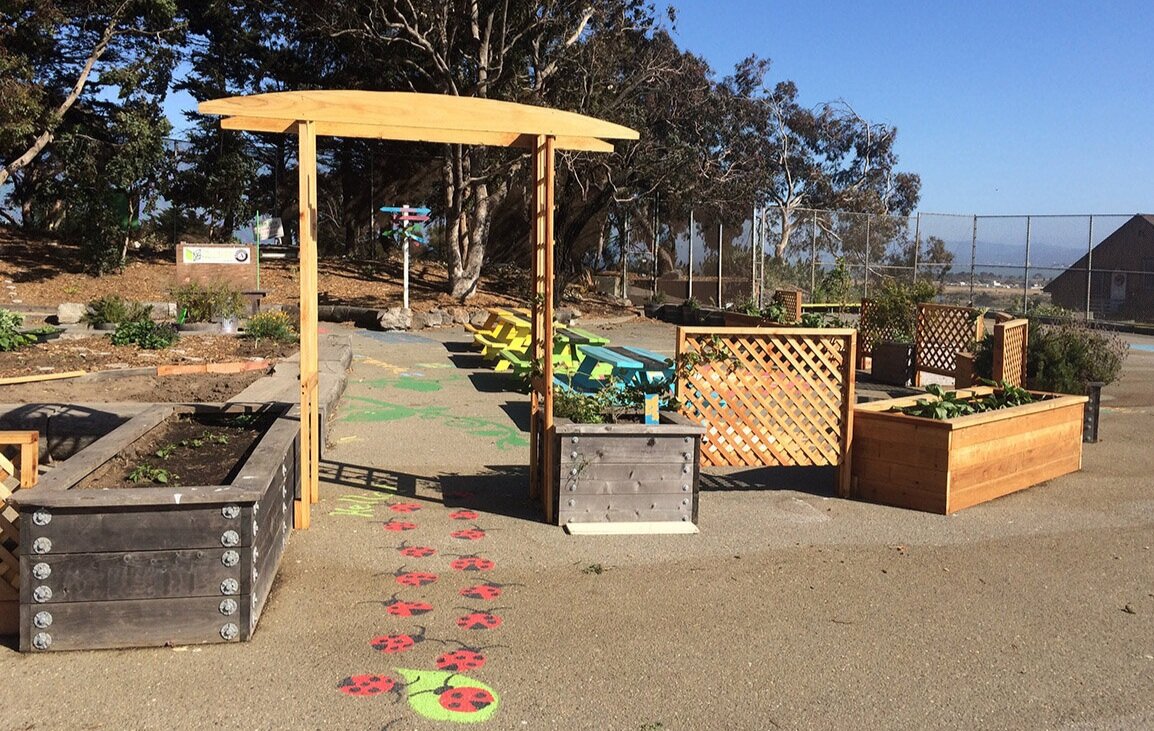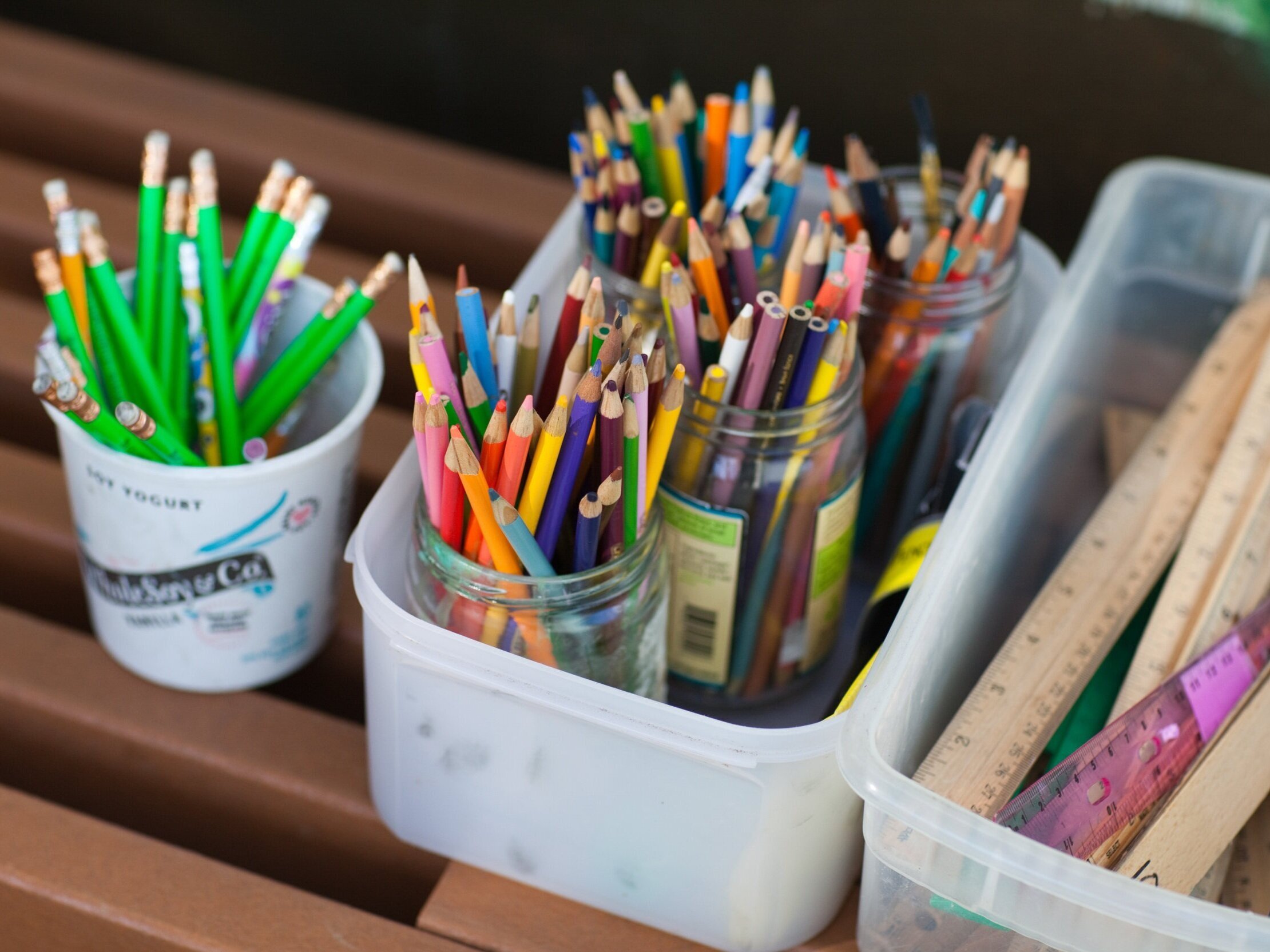Outdoor Classroom Culture and Management
There are many strategies and tips for making a class run smoothly outdoors. In this article, we provide a brief overview of some considerations for the effective creation and management of outdoor classroom culture as well as some tips that are helpful to consider during the pandemic. The recommendations outlined here may be most useful for elementary school students, but many could be helpful for older students as well. The National COVID-19 Outdoor Learning Library’s chapter on Creating Outdoor Spaces shares many resources that illustrate how outdoor classroom design is foundational to effective classroom management; some of the following ideas are covered more thoroughly in that chapter.
A growing body of research shows that students actually perform better cognitively and physically when in or near nature. Our Health Guidance chapter outlines the social-emotional, cognitive, physiological, mental health, and vision and sleep benefits of being outside. These benefits are important to note since often the biggest challenge to teachers taking learning outside, causing the most hesitancy, is anxiety around the management of students in a seemingly distracting space. Students may be distracted at first, but over time and with conscious preparation, management, and routine-building, students become more comfortable in the space, are less distracted, and actually learn better.
Setting the Stage
Getting Teachers Comfortable in the Outdoor Classroom
Schools and districts around the country that have taken learning outside during the pandemic have provided the space and time for teachers to become comfortable outside. The National COVID-19 Outdoor Learning Initiative recommends that schools or districts build at least one outdoor classroom for teachers to meet in during their planning process. Teachers can see and feel what it is like to be in an outdoor classroom, they can envision how they might set up their own space, and they can begin thinking about rituals and routines that will support student management.
Outdoor Classroom Design
Thoughtful outdoor classroom design makes it easier for students to focus on and reflect behavior expectations. Our chapter on Creating Outdoor Spaces is your one-stop shop for setting up your outdoor classroom. With student management in mind, find planning and site assessment tools, recommendations for dealing with weather, seating options, and supplies and storage ideas.
To support students’ transition to the outdoors, consider these quick infrastructure tips: mark an entrance area to the outdoor classroom to distinguish it from recess areas and make a quick routine for passing through the threshold and into the outdoor classroom; provide a gathering area with comfortable seating; provide clipboards so papers do not fly away and rubber bands to hold down the bottoms of pages; ensure there is enough table space to set up curricular materials; add a freestanding whiteboard for easy instruction; and create a sound barrier between the outdoor classroom and any noisy roadways or playgrounds.
Prepare for Going Outside and Student Comfort
It is important to note that, depending on their background or circumstances, not all students will be comfortable in the outdoor classroom right away. In our article, Tips for Creating a Positive Outdoor Experience for Students, we outline the many ways you can prepare students for going outside. Teachers should help students feel comfortable outdoors, from the clothing they wear to preparing them for the types of creatures they may encounter there. Teachers might also consider taking their class or cohort outside for a “getting to know the outdoor classroom” session before academic instruction begins. In this session, teachers could review rules, routines, safety drills, and other processes that students will experience, taking some of the novelty out of going outside to learn.
Quick Tips
Quick Outdoor Classroom Management Tips
Experienced outdoor educators offer a few quick and easy tips that teachers new to outdoor learning will find helpful.
Sun Direction. When you are addressing students, wear a hat and look toward the sun so that your students do not have to.
Language. When introducing the outdoor space, use language that reflects the goals of the space, such as “outdoor classroom.”
Group Agreements. Clarify for yourself and your students what types of behaviors are appropriate in the outdoor classroom and how expectations will be similar to, and/or different from, the indoor classroom. At the beginning of your first outdoor classroom experience, discuss the importance of staying safe and respecting all living things, including plants, animals, one another, and the adults in the outdoor classroom. Emphasize physical distancing, wearing masks, and other COVID-appropriate precautions. Enlist student ideas to establish a simple list of outdoor classroom behaviors, including how to respond to a distraction; what to do if a student becomes too hot, cold, or uncomfortable; and what to do if a student ends the activity or lesson early.
Routines. Create and follow predictable routines, such as starting each class by looking around for a moment to notice things that have changed, then gathering in a circle to talk about the main idea and activities for the day. End each class in a circle again to pair-share or share-out with the class what students learned.
Start with Exploration. Provide an opportunity at the beginning of each outdoor class for students to look around, notice something that has changed, or something that is interesting or beautiful. Taking a little time to explore and acknowledge the distractions at the outset can help reduce them later on.
Call Back. If you are sending students out to explore — for a scavenger hunt, for example — establish a call-back signal, such as a coyote howl or a ringing gong, to let students know when it is time to return to the circle.
Practice. For any new routine, introduce it to your students and then practice together to help them really learn it.
COVID-19 Considerations
Due to the pandemic, there are additional outdoor classroom management strategies that may be considered. Please see our Health Guidance chapter for detailed advice. Here are a few practical tips from schools.
Outdoor Physical Spaces. Create a consistent “Base Camp” for each small group of students. Provide outdoor handwashing stations that are easily accessible to each group.
Teaching and Learning Materials. Reduce shared materials by creating boxes with art materials (colored pencils, glue, scissors, and so on). Label each box with a number and have a set for each student, or one for each group, keeping the same number with each student or group.
Sanitizing. Use materials that can be thoroughly sanitized without falling apart. Create systems for organizing, tracking, and sanitizing shared materials. Create a check-in/check-out system for shared materials used in the outdoor classroom and sanitize whenever materials are checked in. Keep a bucket of soap and water where materials can be placed when students are done. Use sanitizing wipes for the materials that cannot be submerged.
Physical Distancing. Explicitly teach students what 6 feet apart looks like, and practice polite language for reminding one another to stay 6 feet apart. Use hula hoops, vinyl spot markers, chalk, or other visual cues so that students know where to sit or stand. Emphasize physical distancing between other classrooms/groups of students.
Masks. Practice language for reminding one another to keep masks over the mouth and nose.
Going Deeper
Best Practices for Building Outdoor Classroom Culture
Building a strong outdoor classroom culture sets students up for a successful learning experience by explaining what to do before, during, and after a lesson to structure, support, and maintain culture. There are also numerous routines and rituals that can be created for the space. A detailed set of best practices for teaching in the outdoor classroom is provided below. Many of these practices will not be new to classroom teachers who are experts at classroom management, but the practices become even more important and tailored in the outdoors. For further details, example rituals and routines, pictures, and a rubric of these best practices created by Education Outside, read the full document here. These practices were outlined prior to the pandemic and adaptations should be made to some of the routines and rituals to reduce disease transmission risk.
Credits
This article was written by Whitney Cohen, MA, Life Lab; Brooke Larm, MA, Bowers School Farm; Rachel Pringle, MA, Green Schoolyards America; Tahereh Sheerazie, EnrichLA; Samir Thadani, a parent; and Suzanne Whelan. The Best Practices were created by Education Outside.
National COVID-19 Outdoor Learning Initiative
The National COVID-19 Outdoor Learning Initiative supports schools and districts around the country in their efforts to reopen safely and equitably using outdoor spaces as strategic, cost-effective solutions to increase physical distancing capacity onsite and provide access to abundant fresh air. The Initiative seeks to equitably improve learning, mental and physical health, and happiness for children and adults using an affordable, time-tested outdoor approach to keeping schools open during a pandemic.














